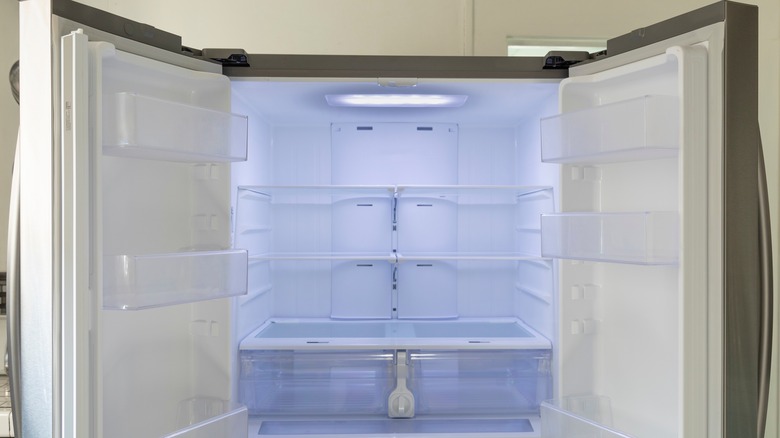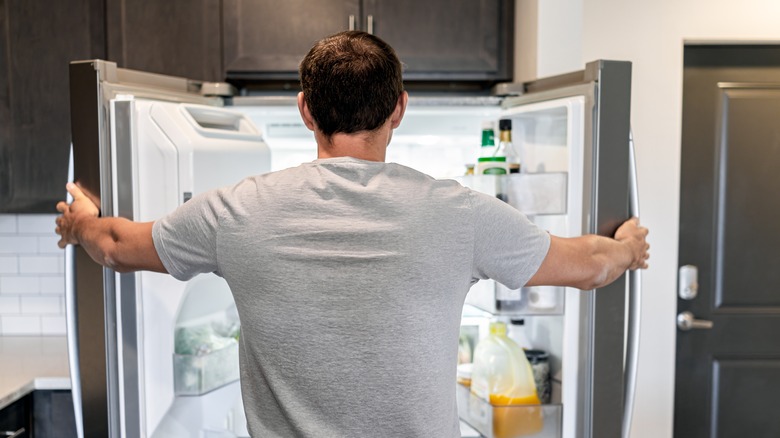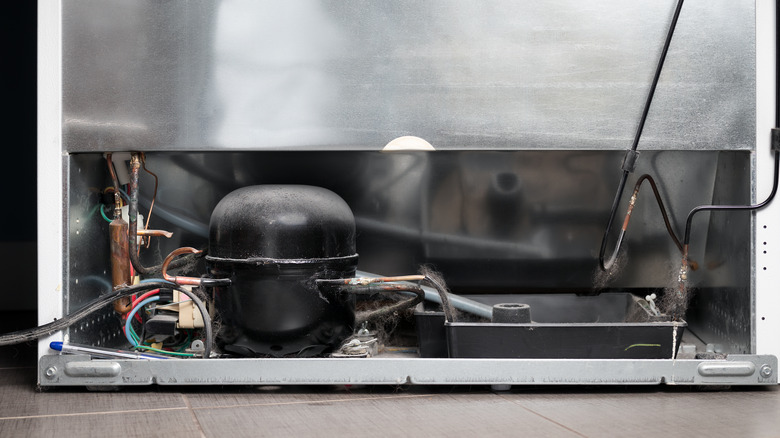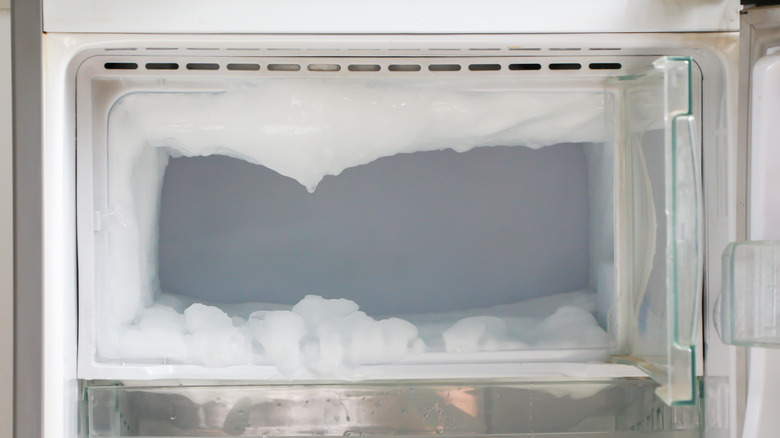5 Key Signs That Your Refrigerator Is About To Break
The refrigerator is one of the most vital household appliances of the modern age. Without it, we wouldn't be able to store perishable foods long-term without canning, we'd have to eat all of our food in one go since we couldn't store leftovers, and we wouldn't be able to keep quick and easy meals comfortably frozen. It's for all of these reasons and more that you should pay especially close attention to how your refrigerator is operating, because all of those benefits are going to go away if it breaks.
In the best-case scenario, you can catch your fridge before it breaks down entirely, schedule some service for it, and keep it running without having to sacrifice all the food inside it. To make that scenario a reality, though, you need to keep your eyes peeled for the signs that your fridge is on its last legs, and swiftly act on them.
Little to no cooling
The first and foremost thing you should be on the lookout for in regard to fridge malfunctions is cool air. Or rather, the distinct lack of cool air. Cooling is literally the one thing your fridge is supposed to be doing, so if it's not doing that, that's a pretty obvious problem.
When you open the fridge, stick your hand in and wave it around a bit to feel the internal temperature. A fridge should feel immediately cold when you open the door, so if you don't get that first wave of chill, that's a bad sign. You can also try poking the food or objects in your fridge to get a sense of how much cooling is actually going on. A stick of butter, for instance, is a great indicator of coldness, since it begins to soften very quickly if it's not kept at the optimal cold temperature.
Spoiling food
The entire reason you put food in the fridge is to preserve it long-term. Obviously, the amount of time you can keep something in the fridge varies wildly based on what it actually is, but in general, any food you put in there should be able to keep for at least a few days. If you're putting food in the fridge and it goes bad faster than that, or even within the same day, that's a sign of one or more problems with the fridge.
The usual culprit here is a lack of cooling, but that's not the only potential cause. Besides a lack of cooling air, the problem could also be in the fridge's motor, its door seal, or any number of other things. Even if the fridge still seems cool and the motor seems to be functioning, it only takes a slight drop in temperature to pull your leftovers into the spoiling zone.
High condensation
Due to the difference between the temperature inside and outside the fridge, there may occasionally be some condensation on the inside. This is normal, provided it's only on the fridge's solid surfaces like its shelves and compartment doors. If, however, you start seeing condensation on your food or on the outside of the fridge door — that's definitely not supposed to be happening.
Condensation only forms in environments of differing temperatures, like the windows of your home or car. If there's excess condensation inside your fridge, that means there's a crack in the body or door seal that's letting warmer air in. The same goes for the outside of the door — if there's a hole in the door seal, the cool air leaks out and condensation drips all over the door. Not only can all this condensation lead to both inner and outer water damage to the fridge, but the motor will start overworking itself to make up the cooling deficit, which can lead to heavy power draws.
Hot or loud motor
All of your fridge's cooling functions are provided by its motor. The motor powers the evaporator coils, which disperse the cool air that keeps everything nice and frosty. Like any motor, your fridge's motor can get a little warm, but this is normal. It's when the motor becomes blisteringly hot that it's probably about to fail. High heat in the motor means it's running beyond its recommended capacity, which is a formula for sudden shutdowns.
In addition to heat, your fridge's motor may also be emitting loud, strange noises. The motor usually emits a dull humming sound whether the door is open or closed, but if it starts sputtering, buzzing, or hissing loudly, that's another sign the motor is being overworked. If you can, reach around to the back of the fridge to feel near the motor. If it's hot and/or producing a lot of sudden rumbling, that thing's on its last legs.
Excess frost
Contrary to what you might expect, your fridge's freezer compartment is not supposed to be covered top-to-bottom in ice. The freezing temperature in your freezer is supposed to be a dry cold, maintaining a uniform temperature that doesn't allow water vapor in. Therefore, if you do start seeing a lot of ice, that's a sign that your freezer isn't being properly regulated.
This can be caused by a defective freezer door seal or a problem with the fridge's internal temperature regulation system. Whatever the case, if your freezer is icing up, it can put whatever food you've got in there at risk of completely solidifying in an icy prison. Depending on the make, model, and year of your fridge, you may be able to either physically defrost it with an ice scraper or run an internal defrosting program, so it might not be a sign of looming danger, but it's definitely something to keep an eye on.





